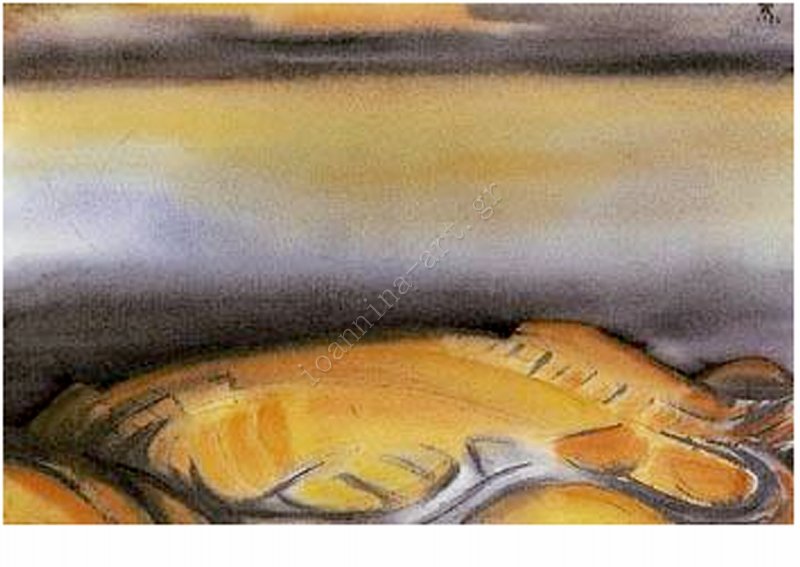Daglis Christos
 Year of birth:
Year of birth: 1916
Year of death:1991
Place of birth:Ioannina
Studies
He studied at the Athens School of Fine Arts, Drawing at Constantinos Parthenis’ workshop and Engraving at Yannis Kefallinos’ workshop.
Personal exhibitions (national or international) / Artwork
All of his surviving works have been done during the intervals of his militant life
Group exhibitions (national or international) / Performances / Concerts
1963-85: group exhibitions
Other activities
He made the costumes for the performances of M. Katrakis, Tz. Karousou, G. Gioldasi, K. Baladima, Y. Ritsos, T. Leivaditis, M. Loudemis, D. Fotiadis, F. Anogeianakis, etc, in the plays “Babylonia”, “Perses”, “Othello”, etc.
Member of organisations national or international
In 1975, Tatiana Gritsi – Milliex wrote “Daglis is one of the few watercolour craftsmen, there is nothing accidental, the water is as much a material for him as the colour, the metamorphosis becomes from knowledge and retained sensitivity, there is nothing sweet, when he throws a handful of red color on the wall of an island house. A white wall of an island, a white wall of executed, a white wall more recently in the memory, blood fresh, light tragic”.


